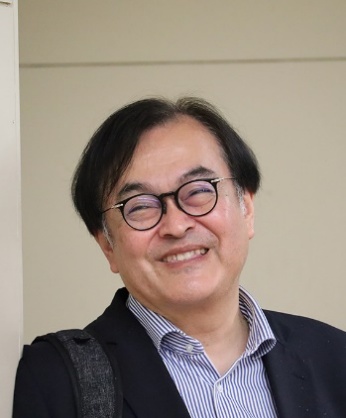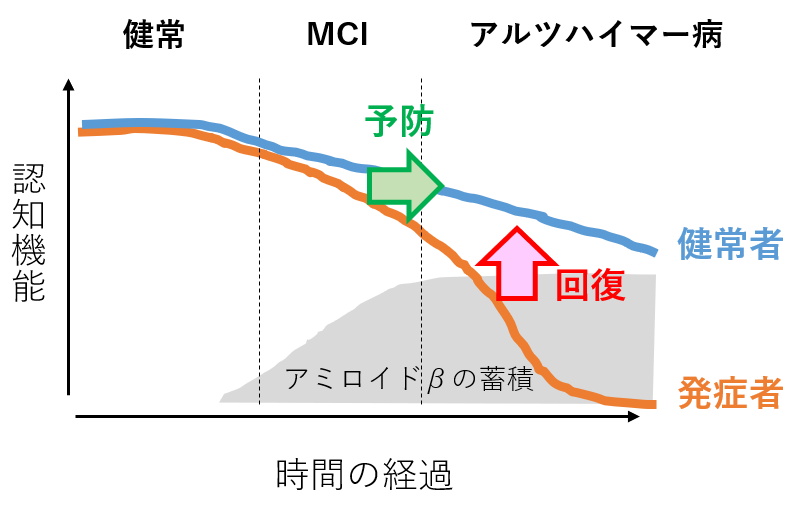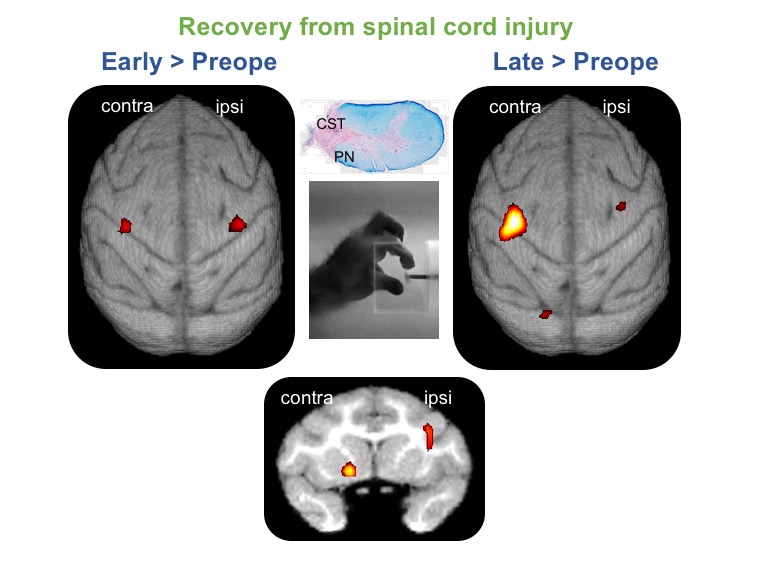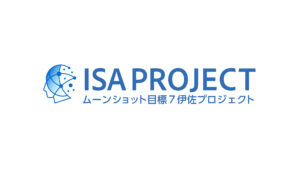Tadashi Isa, M.D. & Ph.D.

氏名Name
Tadashi Isa, M.D. & Ph.D.
所属・職名Affiliation, Title, etc.
Moonshot Goal 7 Isa Project, Project Manager
Graduate School of Medicine, Kyoto University, Professor, Dean
Institute for the Advanced Study of Human Biology (WPI-ASHBi), Kyoto University, Principal Investigator
National Institutes of Natural Sciences, Inter-University Research Institute, Vice President
National Institute for Physiological Sciences, Director General
研究室HPWebsite
一言メッセージShort Message
本プロジェクトでの研究概要Outline of the research in this project
We will develop methods to overcome dementia by enhancing the reservoir functions of the brain, which support its resilience and reserve capacity supported by neuronal plasticity.
Specifically, we will verify the efficacy of methods to enhance reservoir functions, demonstrated first in mouse models of dementia, using primate models such as marmosets and macaques. Furthermore, we will conduct clinical research combining neuromodulation methods like brain stimulation and dual-task training involving both motor and cognitive tasks in humans. Additionally, we will explore potential reservoir functions through elderly cohort studies and postmortem brain observations, feeding these findings back into animal experiments. Through these cycles, we aim to achieve prevention and recovery from dementia by 2040.

これまで主な研究内容Outline of main research so far
Our laboratory has established a unique global position through numerous achievements studying macaques, focusing on neural circuit mechanisms controlling primate-specific functions such as dexterous hand movements, precise eye movements, and visual cognition, as well as functional recovery mechanisms after related neural circuit injury. Specifically, we have shown the functions of spinal interneurons in dexterous hand movement recovery after the spinal cord injury, the role of the ipsilateral motor cortex, and the roles of nucleus accumbens in motivation control for recovery. We have also shown the neural mechanisms of blindsight - the recovery of visually guided eye movements and partially cognitive functions after primary visual cortex injury. In this process, we pioneered the development of techniques using two viral vectors simultaneously to manipulate specific pathways in primates, leading the world in primate neural circuit manipulation technology. Recently, we have expanded our research to higher cognitive functions, studying meso-striatal and meso-frontal dopamine projection systems in flexible decision-making using optogenetic and chemogenetic technologies.

主な経歴・受賞歴等Career, Awards, etc.
- 1985
- Graduated from Faculty of Medicine, the University of Tokyo, obtained medical license
- 1989
- Completed PhD in Physiology, Graduate School of Medicine, the University of Tokyo
- 1988-1990
- Visiting Researcher, Department of Physiology, University of Gothenburg, Sweden
- 1989-1993
- Assistant Professor, the Institute for Brain Research of Faculty of Medicine, the University of Tokyo
- 1993-1995
- Lecturer, Department of Physiology II, Gunma University School of Medicine
- 1995
- Associate Professor, Department of Physiology II, Gunma University School of Medicine
- 1996-2004
- Professor, National Institute for Physiological Sciences, Okazaki National Research Institutes
- 2004-2015
- Professor, National Institute for Physiological Sciences, National Institutes of Natural Sciences
- 2015-2017
- Professor, Department of Neuroscience, Graduate School of Medicine, Kyoto University
- 2017-2022
- Director, Human Brain Research Center, Graduate School of Medicine, Kyoto University
- 2018-2022
- Vice Dean, Graduate School of Medicine, Kyoto University
Vice Director, Institute for the Advanced Study of Human Biology (WPI-ASHBi), Kyoto University - 2020-2022
- Assistant to Executive Vice-President for Research Integrity, Kyoto University
- 2022-
- Dean, Graduate School of Medicine and Faculty of Medicine, Kyoto University
- 2025- (Concurrent)
- Director-General, National Institute for Physiological Sciences
Awards
- 2013
- Minister of Education, Culture, Sports, Science and Technology Award in Science and Technology
- 2006
- Nakaakira Tsukahara Memorial Award, Brain Science Foundation
- 2000
- Human Frontier Science Program Group Grant
主要業績Major Publications
Mitsuhashi, M., Yamaguchi, R., Kawasaki, T., Ueno, S., Sun, Y., Isa, K., Takahashi, J., Kobayashi, K., Onoe, H., Takahashi, R., & Isa, T. (2024). Stage-dependent role of interhemispheric pathway for motor recovery in primates. Nature Communications, 15(1), 6762. https://doi.org/10.1038/s41467-024-51070-w
Sasaki R, Ohta Y, Onoe H, Yamaguchi R, Miyamoto T, Tokuda T. Tamaki Y, Isa K, Takahashi J, Kobayashi K, Ohta J, Isa T (2024) Balancing risk-return decisions by manipulating the mesofrontal circuits in primates. Science, 383:55-61. doi: 10.1126/science.adj6645. Epub 2024 Jan 4.
Vancraeyenest P, Arsenault JT, Li X, Zhu Q, Kobayashi K, Isa K, Isa T, Vanduffel W (2020) Selective mesoaccumbal pathway inactivation affects motivation but not reinforcement-based learning in macaques. Neuron, 108:568-581.e6. doi: 10.1016/j.neuron.2020.07.013. Epub 2020 Aug 5.
Kinoshita M, Kato R, Isa K, Kobayashi K, Kobayashi K, Onoe H, Isa T (2019) Dissecting the circuit for blindsight to reveal the critical role of the pulvinar and superior colliculus. Nature Communications, 10(1):135. doi: 10.1038/s41467-018-08058-0.
Takakuwa N, Kato R, Redgrave P, Isa T (2017) Emergence of visually-evoked reward expectation signals in dopamine neurons via the superior colliculus in V1 lesioned monkeys. eLife 6. pii: e24459. doi: 10.7554/eLife.24459.
Tohyama T, Kinoshita M, Kobayashi K, Isa K, Watanabe D, Kobayashi K, Liu M, Isa T (2017) Contribution of propriospinal neurons to recovery of hand dexterity after corticospinal tract lesions in monkeys. Proceedings of National Academy of Science USA, 114:604-609. doi: 10.1073/pnas.1610787114. Epub 2017 Jan 3.
Sawada M, Kato K, Kunieda T, Mikuni N, Miyamoto S, Onoe H, Isa T, Nishimura Y (2015) Function of nucleus accumbens in motor control during recovery after spinal cord injury. Science, 350: 98-101. doi: 10.1126/science.aab3825. Epub 2015 Oct 1.
Kinoshita M, Matsui R, Kato S, Hasegawa T, Kasahara H, Isa K, Watakabe A, Yamamori T, Nishimura Y, Alstermark B., Watanabe D, Kobayashi K, Isa T (2012) Genetic dissection of the circuit for hand dexterity in primates. Nature, 487: 235-238. doi: 10.1038/nature11206.
Yoshida M, Itti L, Berg D, Ikeda T, Kato R, Takaura K, White B, Munoz D, Isa T (2012) Saliency detection during free-viewing in monkeys with blindsight. Current Biology, 22:1429-1434. doi: 10.1016/j.cub.2012.05.046. Epub 2012 Jun 28
Nishimura Y, Onoe T, Morichika Y, Perfiliev S, Tsukada H, Isa T (2007) Time-dependent central compensatory mechanism of finger dexterity after spinal-cord injury. Science, 318: 1150-1155. doi: 10.1126/science.1147243.


